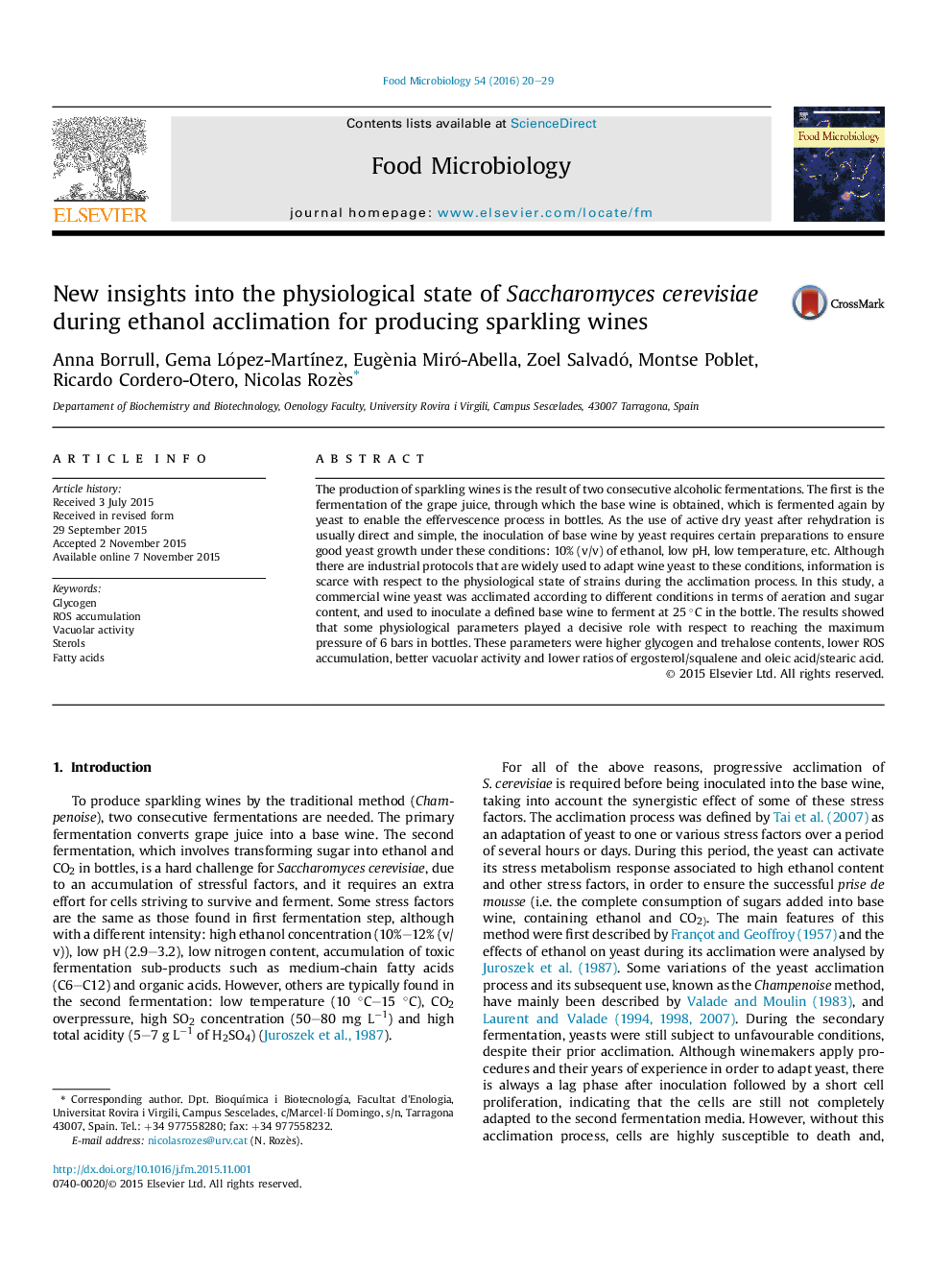| Article ID | Journal | Published Year | Pages | File Type |
|---|---|---|---|---|
| 4362625 | Food Microbiology | 2016 | 10 Pages |
•Different conditions of acclimation to ethanol of Saccharomyces cerevisiae wine cells were evaluated.•Secondary fermentations in bottle, sparkling wine conditions, were performed.•Carbohydrate cell reserves, vacuolar activity, fatty acid and sterol compositions were determined.•The best acclimated cells to conduct the secondary fermentation were in semi-anaerobiosis condition in presence of sugars.
The production of sparkling wines is the result of two consecutive alcoholic fermentations. The first is the fermentation of the grape juice, through which the base wine is obtained, which is fermented again by yeast to enable the effervescence process in bottles. As the use of active dry yeast after rehydration is usually direct and simple, the inoculation of base wine by yeast requires certain preparations to ensure good yeast growth under these conditions: 10% (v/v) of ethanol, low pH, low temperature, etc. Although there are industrial protocols that are widely used to adapt wine yeast to these conditions, information is scarce with respect to the physiological state of strains during the acclimation process. In this study, a commercial wine yeast was acclimated according to different conditions in terms of aeration and sugar content, and used to inoculate a defined base wine to ferment at 25 °C in the bottle. The results showed that some physiological parameters played a decisive role with respect to reaching the maximum pressure of 6 bars in bottles. These parameters were higher glycogen and trehalose contents, lower ROS accumulation, better vacuolar activity and lower ratios of ergosterol/squalene and oleic acid/stearic acid.
